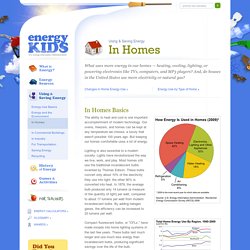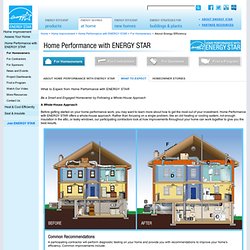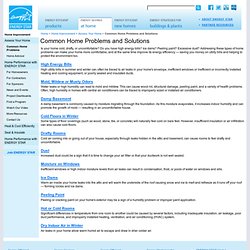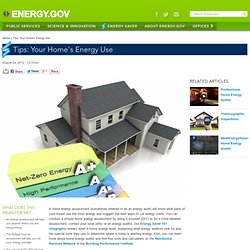

Kids Korner - Energy Efficiency. Acknowledgements Kids Korner is made possible by the creative, talented and dedicated team consisting of the following: Valerie Williams Valerie Williams, Apogee’s Art Director and Lead Artist is the creator and artistic talent behind Kids Korner.

In the late 90s, after producing hundreds of illustrations and animations for Apogee online courses and Internet content over the years, it occurred to Valerie that these expensive art elements could be re-purposed for communicating complicated energy concepts to children. Encouraged by the enthusiastic reaction she received from our utility customers, Valerie undertook the design and began the curriculum development of what has become one of the most elaborate and comprehensive energy education sites around.
Margaret M. Margaret M. Michael Overstreet, Product Manager Michael Overstreet is Apogee’s Kids Korner Product Manager and the mastermind of the site’s programming and navigational design. Susan Gilbert, Curriculum Development. Energy Kids - Saving Energy. What can I do to save energy?

What is the difference between energy conservation and energy efficiency? File Scrub 1 ::::: EE ... about_energy_efficiency-basics We all use energy All of us use energy every day — for transportation, cooking, heating and cooling rooms, manufacturing, lighting, and entertainment. The choices we make about how we use energy — turning machines off when we’re not using them or choosing to buy energy efficient appliances — impact our environment and our lives. Efficiency and conservation are different but related. Energy Kids - In Homes. File Scrub 1 ::::: EE ... us_energy_homes-basics In Homes Basics The ability to heat and cool is one important accomplishment of modern technology.

Our ovens, freezers, and homes can be kept at any temperature we choose, a luxury that wasn't possible 100 years ago. But keeping our homes comfortable uses a lot of energy. Lighting is also essential to a modern society. Compact fluorescent bulbs, or "CFLs," have made inroads into home lighting systems in the last few years. Appliances such as refrigerators, washing machines, and dryers are also more energy efficient than they used to be. The amount of energy we use in our homes mainly depends on the climate where we live and the types and number of energy consuming devices we use. About Energy Efficiency. Skip directly to page content Home Improvement Join ENERGY STAR Home > Home Improvement > Home Performance with ENERGY STAR > For Homeowners > About Energy Efficiency Home Performance with ENERGY STAR What to Expect from Home Performance with ENERGY STAR Be a Smart and Engaged Homeowner by Following a Whole-House Approach A Whole-House Approach Before getting started on your home performance work, you may want to learn more about how to get the most out of your investment.

Common Recommendations Each home#8217;s problems are different, but there are some recommendations that Home Performance with ENERGY STAR participating contractors frequently makes: Sealing Air Leaks and Adding Insulations These are critical first steps to improving the energy efficiency of your home.
Follow these important guidelines to help ensure your energy efficiency investments pay off – not only by lowering your utility bills, but also by improving your comfort, enhancing indoor air quality, and ensuring safety. Common Home Problems and Solutions. Is your home cold, drafty, or uncomfortable?

Do you have high energy bills? Ice dams? Peeling paint? Excessive dust? Addressing these types of home problems can make your home more comfortable, and at the same time improve its energy efficiency — saving you money on utility bills and helping to protect the environment too. High Energy Bills High utility bills in summer and winter can often be traced to air leaks in your home's envelope, inefficient windows or inefficient or incorrectly installed heating and cooling equipment, or poorly sealed and insulated ducts. Mold, Mildew or Musty Odors Water leaks or high humidity can lead to mold and mildew. Damp Basement A damp basement is commonly caused by moisture migrating through the foundation.
Cold Floors in Winter Some types of floor coverings (such as wood, stone, tile, or concrete) will naturally feel cold on bare feet. Drafty Rooms Dust Moisture on Windows Ice Dams Peeling Paint. Tips: Your Home's Energy Use. A home energy assessment (sometimes referred to as an energy audit) will show what parts of your house use the most energy and suggest the best ways to cut energy costs.

You can conduct a simple home energy assessment by doing it yourself (DIY) or, for a more detailed assessment, contact your local utility or an energy auditor. Our Energy Saver 101 infographic breaks down a home energy audit, explaining what energy auditors look for and the special tools they use to determine where a home is wasting energy. Also, you can learn more about home energy audits and find free tools and calculators on the Residential Services Network or the Building Performance Institute. DIY Energy Assessment Tips Check the insulation in your attic, exterior and basement walls, ceilings, floors, and crawl spaces. Your Whole-House Plan After you know where your home is losing energy, make a plan by asking yourself a few questions: How much money do you spend on energy? Heat Loss from a House. Energy-Efficient Homes.